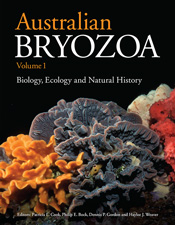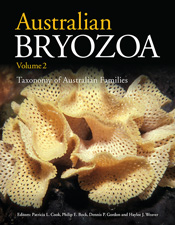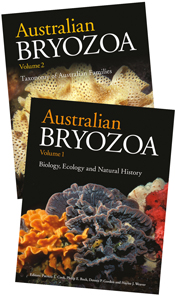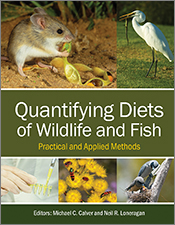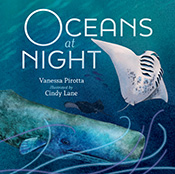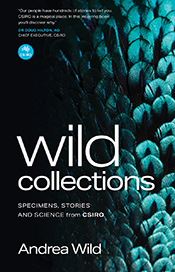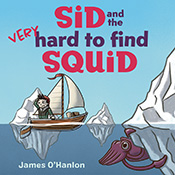Australian Bryozoa Volume 1

Biology, Ecology and Natural History
Edited by: Patricia L Cook, Philip E Bock, Dennis P Gordon, Haylee J WeaverThe first of two volumes describing Australia's 1200 known species of bryozoans.
Bryozoans are aquatic animals that form colonies of connected individuals. They take a variety of forms: some are bushy and moss-like, some are flat and encrusting and others resemble lace. Bryozoans are mostly marine, with species found in all oceans from sublittoral to abyssal depths, but freshwater species also exist. Some bryozoans are of concern as marine-fouling organisms and invasive species, while others show promise as sources of anticancer, antiviral and antifouling substances. + Full description
Written by experts in the field, Australian Bryozoa Volume 1: Biology, Ecology and Natural History is the first of two volumes describing Australia’s 1200 known species of bryozoans, the richest diversity of bryozoans of any country in the world. It contains chapters on the discovery of bryozoans, their morphology, classification and fossil history, their roles in biosecurity and marine benthic environments, and potential uses in biotechnology and ocean acidification. It provides an authoritative reference for biology students, academics and others interested in marine biology.
Joint Recipient, 2019 Whitley Awards Certificate of Commendation: Biological Resource
- Short descriptionNews
Co-published with the Australian Biological Resources Study (ABRS).
Reviews
"The beautiful color photographs of living colonies included in Volume 1 will be highly useful to marine biologists and non-specialists, helping them to recognize bryozoan growth forms... The data included on bryozoans within applied research is one of the great strengths of Volume 1, particularly in the chapters on biosecurity (Chapter 6), biotechnology (Chapter 7), and climate change (Chapter 8)."
Leandro M. Vieira, Systematic Biology 68(1), 2019
"This volume showcases bryozoans and their unique morphological, functional, and ecological features. It unveils their cryptic diversity, typically only seen by the eyes of the dedicated scholar, ventures into the applied aspects of biosecurity and biotechnology, and deliberates
their fate in an ever-increasing acid ocean."
Andrea Waeschenbach, The Quarterly Review of Biology 94(2) 2019
Details
Hardback | July 2018 | $140.00ISBN: 9781486306794 | 200 pages | 270 x 210 mm
Publisher: CSIRO Publishing
Colour photographs
ePDF | July 2018
ISBN: 9781486306800
Publisher: CSIRO Publishing
Available from eRetailers
Features
- The first of two volumes (published concurrently) describing Australia’s 1200 known species of bryozoans.
- Comprehensively covers the history, biology, morphology, ecology, life history and economic impacts of bryozoans.
- Illustrated with colour photographs, diagrams and scanning electron microscope (SEM) images.
Contents
List of authors1: INTRODUCING BRYOZOANS
Patricia L. Cook, Dennis P. Gordon, Peter J. Hayward, Philip E. Bock and Yvonne Bone
2: HISTORY OF DISCOVERY IN AUSTRALIAN WATERS
Philip E. Bock, Patricia L. Cook and Dennis P. Gordon
3: GENERAL MORPHOLOGY AND TERMINOLOGY
Philip E. Bock, Patricia L. Cook and Dennis P. Gordon
4: MODERN AND CENOZOIC BRYOZOAN COLONY CLASSIFICATION SCHEMES
Yvonne Bone
5: BRYOZOANS ON SEAMOUNTS
Dennis P. Gordon
6: BRYOZOANS AND BIOSECURITY
Dennis P. Gordon
7: BRYOZOANS AND BIOTECHNOLOGY
Michèle Prinsep
8: BRYOZOANS AND OCEAN ACIDIFICATION
Abigail M. Smith
9: BRYOZOANS IN THE MARINE BENTHOS
Robyn L Cumming, Dennis P Gordon and Karen Gowlett-Holmes
10: FOSSIL BRYOZOANS OF AUSTRALIA
PART A – PALAEOZOIC ERA
Catherine M Reid
PART B – Fossil Record for Bryozoa Australia: Cretaceous – Cenozoic
Rolf Schmidt
Index
View the full table of contents (PDF, 63kb)
Authors
Patricia Cook was born in England, and worked at the London Natural History Museum until retiring in 1986. After retirement she came to Australia to continue her work on bryozoan systematics. She has written or co-authored about 100 papers. She was instrumental in establishing the International Bryozoology Association, of which she was secretary for many years. Pat died aged 88 in late 2015.
Philip Bock has been a geologist, lecturing at RMIT until retiring in 1997. His enthusiasm for bryozoans arose after mapping the geology of south-western Victoria. He is an Honorary Associate at Museums Victoria, and created the “Bryozoan Home Page” website in 1994. He also is an editor for the World Register of Marine Species.
Dennis Gordon is an Emeritus Researcher at the National Institute of Water & Atmospheric Research (NIWA) in Wellington, New Zealand. He is a global authority on the biology and systematics of bryozoa but has an interest in all life, and served on the international project team of the Catalogue of Life.
Haylee Weaver is the fauna taxonomist at the Australian Biological Resources Study (ABRS). She is a parasitologist who has written extensively on the ecology of parasites of Australian rodents. Haylee edits fauna books for ABRS and has developed an interest in bryozoan taxonomy.
Australian Biological Resources Study (ABRS)
In 1973 the Commonwealth Government established the ABRS to document what plants and animals there are in Australia and where they occur. The ABRS is now part of the Department of Environment and Energy. It brings together the expertise of scientists from around Australia and overseas, to prepare and publish authoritative information about Australia’s flora and fauna.

